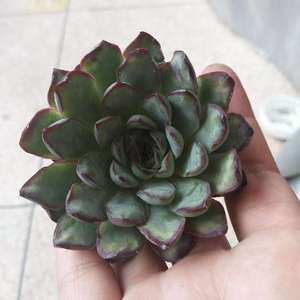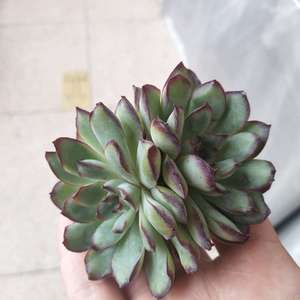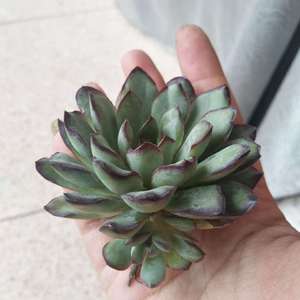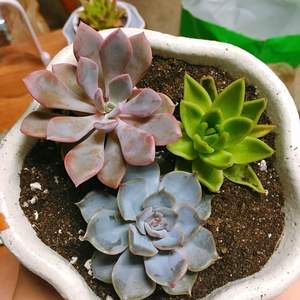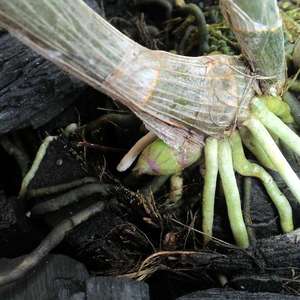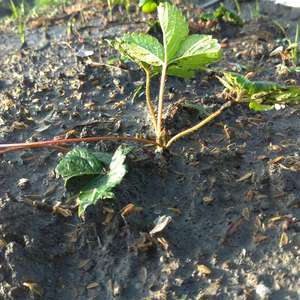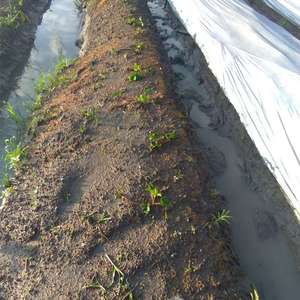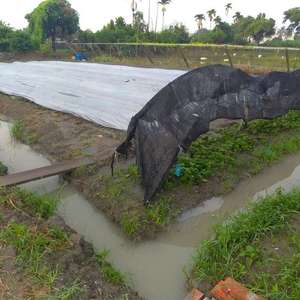文章
Miss Chen
2018年09月05日

Bearing spikes of fluffy, purple, summer flowers, Liatris spicata, also known as blazing star, provides its best effect in mass plantings. Hardy in U.S. Department of Agriculture plant hardiness zones 3 through 8, blazing star is a U.S. native that's also called gayfeather, snakeroot and dense blazing star. Its grass-like clumps grow 24 to 48 inches tall and 9 to 18 inches wide, and its flower spikes are 6 to 12 inches long. White, bluish and deep purple cultivars are available. A perennial plant, blazing star can be planted as a corm, which is a swollen underground stem, and also as a young plant. Blazing star flowers are attractive to butterflies.

Blazing Star Corms
Step 1
Till moist, well-drained soil in full sun with a garden fork to a depth of 6 inches in fall or spring. Mix in a 2-inch layer of garden compost, leaf mold or other organic matter if the soil is sandy and dry.
Step 2
Scatter blazing star corms across the growing site to create an informal effect or arrange the corms in the desired pattern. Space the corms about 2 to 4 inches apart and at a rate of 10 to 20 blazing star corms per square foot.
Step 3
Dig a hole beneath a blazing star corm 5 inches deep and as wide as the corm. Place it in the hole so that the widest, flattest part of the corm lies on the base of the hole. Fill in the hole with dug soil and plant the rest of the corms in the same way.
Step 4
Water the blazing star corms thoroughly and water regularly throughout the growing season so that the soil is constantly moist but not saturated.

Blazing Star Plants
Step 1
Dig a hole as wide and deep as the blazing star root ball in a full-sun growing site with a trowel in spring. Blazing star tolerates dry, infertile soil but grows and flowers best in moist, well-drained, rich soil.
Step 2
Place a blazing star plant in the hole so that the surface of the root ball is level with the surrounding soil. Fill in gaps around the root ball with dug soil. Space blazing star plants 9 to 18 inches apart.
Step 3
Water the blazing star plants thoroughly and apply water throughout the growing season to keep the soil moist, especially when conditions are dry.
Step 4
Spread a 9-18-9 ready-to-use, slow-release fertilizer around the planting site at a rate of 1 tablespoon per square foot. Apply the fertilizer every three months during the growing season.

Blazing Star Corms
Step 1
Till moist, well-drained soil in full sun with a garden fork to a depth of 6 inches in fall or spring. Mix in a 2-inch layer of garden compost, leaf mold or other organic matter if the soil is sandy and dry.
Step 2
Scatter blazing star corms across the growing site to create an informal effect or arrange the corms in the desired pattern. Space the corms about 2 to 4 inches apart and at a rate of 10 to 20 blazing star corms per square foot.
Step 3
Dig a hole beneath a blazing star corm 5 inches deep and as wide as the corm. Place it in the hole so that the widest, flattest part of the corm lies on the base of the hole. Fill in the hole with dug soil and plant the rest of the corms in the same way.
Step 4
Water the blazing star corms thoroughly and water regularly throughout the growing season so that the soil is constantly moist but not saturated.

Blazing Star Plants
Step 1
Dig a hole as wide and deep as the blazing star root ball in a full-sun growing site with a trowel in spring. Blazing star tolerates dry, infertile soil but grows and flowers best in moist, well-drained, rich soil.
Step 2
Place a blazing star plant in the hole so that the surface of the root ball is level with the surrounding soil. Fill in gaps around the root ball with dug soil. Space blazing star plants 9 to 18 inches apart.
Step 3
Water the blazing star plants thoroughly and apply water throughout the growing season to keep the soil moist, especially when conditions are dry.
Step 4
Spread a 9-18-9 ready-to-use, slow-release fertilizer around the planting site at a rate of 1 tablespoon per square foot. Apply the fertilizer every three months during the growing season.
0
0
文章
Miss Chen
2018年09月04日

Daylilies (Hemerocallis spp.) are named for their short-lived blooms, but these perennials can produce flowers for three to four weeks with the right care. Daylilies are hardy in U.S. Department of Agriculture plant hardiness 3 through 9 and grow 6 to 36 inches tall and 18 to 24 inches wide, depending on the variety. Watering daylilies frequently, removing their faded flowers, dividing them when crowded and growing them in full sun encourage prolific flowering.

Watering Daylilies
Continually moist soil promotes flowering in daylilies. These plants are drought-tolerant, but they flower best when they receive 1 inch of water per week, and they need more water when the weather is hot and dry.
Water daylilies thoroughly when their first flower buds appear in spring, and spread a 2-inch-thick layer of shredded leaves or other light mulch over the bare soil between plants. Water the plants again when the soil surface is dry; scrape back some mulch to check if you aren't sure about the soil's condition. Don't water the plants so much that the ground becomes soggy.
Removing Faded Flowers
Taking off faded flowers prevents daylilies from developing seeds, which encourages more blooms. Seedpods behind the faded flowers must be removed to prompt the plants to flower again.
Daylilies produce many flowers on single stems, and usually the flowers last about one day. Every two or three days, pinch off the faded flowers and developing seedpods where they join the stems. When all the flower buds on a stem have bloomed, prune the stem at its base. Sterilize pruning shear blades before and after pruning daylilies by wiping them with a cloth that was dipped in rubbing alcohol.
Dividing Daylilies
Poorly performing daylilies may be crowded, and dividing the plants usually increases blooming. Daylilies grow in fan-shaped clumps, and over time these clumps become congested. A sign of crowded plants is few flowers.
Divide daylilies in spring. Push a garden fork deeply into the ground several times around a daylily clump, levering the fork upward each time until the daylily's root ball lifts out of the ground. Using a sharp knife or two garden forks inserted back to back into the clump then pulled apart, divide the clump into three or four sections. Plant the sections 18 to 24 inches apart and at their original growing depths.

Using Full-Sun Sites
Daylilies flower best when planted in a full-sun location. Specimens growing in partially shaded spots grow well, but they flower less. Growing daylilies in areas that receive at least six hours of sunlight daily provides the most flowers, but in warm climates the plants need some light shade during the hottest part of the day.
Remove sources of shade, such as overhanging foliage, or transplant shaded daylilies to a full-sun site. Daylilies also can be replanted in a sunny spot after their clumps are divided in spring.

Watering Daylilies
Continually moist soil promotes flowering in daylilies. These plants are drought-tolerant, but they flower best when they receive 1 inch of water per week, and they need more water when the weather is hot and dry.
Water daylilies thoroughly when their first flower buds appear in spring, and spread a 2-inch-thick layer of shredded leaves or other light mulch over the bare soil between plants. Water the plants again when the soil surface is dry; scrape back some mulch to check if you aren't sure about the soil's condition. Don't water the plants so much that the ground becomes soggy.
Removing Faded Flowers
Taking off faded flowers prevents daylilies from developing seeds, which encourages more blooms. Seedpods behind the faded flowers must be removed to prompt the plants to flower again.
Daylilies produce many flowers on single stems, and usually the flowers last about one day. Every two or three days, pinch off the faded flowers and developing seedpods where they join the stems. When all the flower buds on a stem have bloomed, prune the stem at its base. Sterilize pruning shear blades before and after pruning daylilies by wiping them with a cloth that was dipped in rubbing alcohol.
Dividing Daylilies
Poorly performing daylilies may be crowded, and dividing the plants usually increases blooming. Daylilies grow in fan-shaped clumps, and over time these clumps become congested. A sign of crowded plants is few flowers.
Divide daylilies in spring. Push a garden fork deeply into the ground several times around a daylily clump, levering the fork upward each time until the daylily's root ball lifts out of the ground. Using a sharp knife or two garden forks inserted back to back into the clump then pulled apart, divide the clump into three or four sections. Plant the sections 18 to 24 inches apart and at their original growing depths.

Using Full-Sun Sites
Daylilies flower best when planted in a full-sun location. Specimens growing in partially shaded spots grow well, but they flower less. Growing daylilies in areas that receive at least six hours of sunlight daily provides the most flowers, but in warm climates the plants need some light shade during the hottest part of the day.
Remove sources of shade, such as overhanging foliage, or transplant shaded daylilies to a full-sun site. Daylilies also can be replanted in a sunny spot after their clumps are divided in spring.
0
0
文章
Miss Chen
2018年09月04日

Newly transplanted day lilies (Hemerocallis spp.) establish quickly, producing lush, swordlike spring and summer foliage punctuated by bright summer flowers. Day lilies grow in U.S. Department of Agriculture plant hardiness zones 3 through 10, depending on the variety. Whether you are transplanting new day lilies or dividing and transplanting those you already have, doing so at the right time ensures you still get to enjoy healthy plants and a full season of flowers.
New Plants

New day lily plants establish quickly when planted in spring, but you can plant them any time between spring and late summer. Potted plants can survive without immediate planting if you provide them with full sun and keep the soil moist. Day lilies bought as bareroot plants that aren't packaged in soil need immediate transplanting so the roots don't dry out. Trim off the top one-third of the foliage with shears wiped with a cloth soaked in rubbing alcohol before transplanting. Digging and transplanting on a cloudy day or in late afternoon prevents heat and sun stress on newly moved plants.
Divide and Move

Although existing day lily plants tolerate digging and transplanting any time during the spring and summer, the best time to dig in in early spring just as they begin putting on new growth, or in summer right after they finish their first flush of flowering. The plants require digging, dividing and transplanting every three years, or when the clumps get too large and the plants begin flowering poorly. Cutting back the leaves to 6 inches tall prevents breakage when you dig them up. Loosen the soil around the perimeter of the root zone with a spading fork and slide the fork underneath the roots, lifting the day lilies from the ground. Split the lifted clump into sections, with four leaf fans on each section, before transplanting.
The Transplant Process

Garden beds that get full, all-day sun with well-draining but moist soil provide healthy growing conditions for your day lilies. Mixing in a 2- to 4-inch layer of compost into the top 8 inches of soil improves the soil. Plant new or divided transplants in a hole about the same depth as the root ball, so the crown of the plants sits just at the soil surface, and then fill in the hole with soil. Creating a mound of soil in the bottom of the hole allows you to spread the day lily roots out in the hole so they can establish well. Space the plants about 18 inches apart to prevent overcrowding.
Care After Transplanting

A deep watering right after transplanting helps the soil settle around the roots. After watering, cover the soil with a 2- to 3-inch layer of bark or pine straw mulch, leaving 1 to 2 inches between the mulch and the base of the plants. Mulch helps retain moisture and insulates the soil, while also smothering and preventing weed growth. Water day lilies once each week, soaking the soil 8 inches deep. You can trim off any tattered or damaged leaves with disinfected shears to improve the appearance of the day lilies as they establish.
New Plants

New day lily plants establish quickly when planted in spring, but you can plant them any time between spring and late summer. Potted plants can survive without immediate planting if you provide them with full sun and keep the soil moist. Day lilies bought as bareroot plants that aren't packaged in soil need immediate transplanting so the roots don't dry out. Trim off the top one-third of the foliage with shears wiped with a cloth soaked in rubbing alcohol before transplanting. Digging and transplanting on a cloudy day or in late afternoon prevents heat and sun stress on newly moved plants.
Divide and Move

Although existing day lily plants tolerate digging and transplanting any time during the spring and summer, the best time to dig in in early spring just as they begin putting on new growth, or in summer right after they finish their first flush of flowering. The plants require digging, dividing and transplanting every three years, or when the clumps get too large and the plants begin flowering poorly. Cutting back the leaves to 6 inches tall prevents breakage when you dig them up. Loosen the soil around the perimeter of the root zone with a spading fork and slide the fork underneath the roots, lifting the day lilies from the ground. Split the lifted clump into sections, with four leaf fans on each section, before transplanting.
The Transplant Process

Garden beds that get full, all-day sun with well-draining but moist soil provide healthy growing conditions for your day lilies. Mixing in a 2- to 4-inch layer of compost into the top 8 inches of soil improves the soil. Plant new or divided transplants in a hole about the same depth as the root ball, so the crown of the plants sits just at the soil surface, and then fill in the hole with soil. Creating a mound of soil in the bottom of the hole allows you to spread the day lily roots out in the hole so they can establish well. Space the plants about 18 inches apart to prevent overcrowding.
Care After Transplanting

A deep watering right after transplanting helps the soil settle around the roots. After watering, cover the soil with a 2- to 3-inch layer of bark or pine straw mulch, leaving 1 to 2 inches between the mulch and the base of the plants. Mulch helps retain moisture and insulates the soil, while also smothering and preventing weed growth. Water day lilies once each week, soaking the soil 8 inches deep. You can trim off any tattered or damaged leaves with disinfected shears to improve the appearance of the day lilies as they establish.
0
0
文章
Miss Chen
2018年09月01日

Russian sage is a 3 to 5-foot tall perennial with purplish blue flowers and silver foliage. It has fragrant leaves and it blooms from mid-summer season to the fall. It is a good plant for fall color in the garden, to use for dried or cut flowers, or to attract butterflies. Russian sage can be propagated by division every three years in the spring season or fall.

Step 1
Make sure the plant isn't in active bloom and that the buds are dry. Russian sage is not in active bloom when the buds are dry, even though it may still look active.
Step 2
Cut down the stems to approximately 6 to 8 inches high with garden trimmers. After cutting, dig up the plant with a shovel, creating a wide circle around it to get as much rootball as can be salvaged.
Step 3
Remove soil around the roots and divide them into thirds if the plant is big enough, (in half if it is small). Pull the roots apart with your hands.
Step 4
Keep the roots in water while you are transplanting.
Step 5
Dig a new hole as deep as the length of the roots for divided plants with shovel, adding in manure and compost to add nutrients to the soil.

Step 6
Set the plant's crown at the surface of the dirt, pulling dirt around the plant's roots as you continue.
Step 7
Water Russian sage after the rootball has completely been covered in amended soil (soil with the added nutrients in step 5) and patted down (to ensure stability).
Step 8
Mulch around the plant when the ground is about to freeze, sometime before the first "hard freeze" in your area. Mulching prior to ground freeze will keep the plant insulated and ensure it survives the winter.

Step 1
Make sure the plant isn't in active bloom and that the buds are dry. Russian sage is not in active bloom when the buds are dry, even though it may still look active.
Step 2
Cut down the stems to approximately 6 to 8 inches high with garden trimmers. After cutting, dig up the plant with a shovel, creating a wide circle around it to get as much rootball as can be salvaged.
Step 3
Remove soil around the roots and divide them into thirds if the plant is big enough, (in half if it is small). Pull the roots apart with your hands.
Step 4
Keep the roots in water while you are transplanting.
Step 5
Dig a new hole as deep as the length of the roots for divided plants with shovel, adding in manure and compost to add nutrients to the soil.

Step 6
Set the plant's crown at the surface of the dirt, pulling dirt around the plant's roots as you continue.
Step 7
Water Russian sage after the rootball has completely been covered in amended soil (soil with the added nutrients in step 5) and patted down (to ensure stability).
Step 8
Mulch around the plant when the ground is about to freeze, sometime before the first "hard freeze" in your area. Mulching prior to ground freeze will keep the plant insulated and ensure it survives the winter.
0
0
文章
Miss Chen
2018年09月01日

A standby in the butterfly garden, milkweed (Asclepias syriaca), which grows in U.S. Department of Agriculture plant hardiness zones 3 through 9, provides the sole food source for monarch butterfly caterpillars. This 2 to 3-foot-tall perennial flowers through the summer and is one of several nectar sources for the adult monarch butterflies. With little required care, milkweed is a smart choice for meadows and wild areas of the yard.

Seed Control
Milkweed is best grown in naturalized areas and meadows as it tends to spread and take over more formal garden settings. You can keep it in check by plucking off all the flowers before they turn into seedpods. Use a pair of pruning shears. After clipping, rinse the blades in a solution of 1 part rubbing alcohol to 1 part water then let them dry before storing. Milkweed also spreads -- sometimes aggressively -- by its roots.
Milkweed and Larvae
Monarch butterfly caterpillars rely on the milkweed's leaves for food, but they leave holes behind when they feed. Because of this, milkweed works best in an informal garden setting where the feeding caterpillars can leave ragged-looking plants without ruining your manicured gardens. The caterpillars are easy to find with their striking yellow, white and black stripes.
Slug Problems
While resistant to disease, milkweed does attract slugs. These slow-moving, leaf-eating garden pests damage leaves and flowers when given a chance. If you notice large holes in the leaves, check for slugs -- the best time is after dark with a flashlight -- under the leaves every two to three days. Bring a bucket of water with 1 capful of dish soap added with you. As you pick off the slugs, drop them in the bucket. The soap kills the slugs, eliminating the unpleasant task of crushing them. Wear gardening gloves if you don't like touching the slugs.

Milkweed Aphids
Milkweed aphids suck sap from the plant's leaves. While natural predators usually keep aphids in check, you can use insecticidal soap for severe infestations. Spray the aphids directly with a ready-to-use product until they are saturated. Be careful not to get any on monarch butterfly caterpillars. Because milkweed is such an important plant for the monarch butterfly, avoid treatments when possible and don't use harsher chemical treatments. Sometimes simply spraying aphids with a strong jet of water is enough to get rid of them. Don't mistake the aphids for monarch eggs. Monarch butterflies commonly lay a single egg on each milkweed plant under a leaf. The milkweed aphids are yellow and generally live in colonies while the egg is and white and commonly on its own.
Winter Care and Toxicity
Milkweed plants survive the winter in cold regions by going dormant. In fall, adding a 3- to 4-inch-deep layer of mulch helps insulate the soil. While not required, this helps keep the ground from freezing and thawing and disrupting the roots. In spring, pull back the mulch to give space to the new growth. Plant milkweed away from areas where small children or pets spend time as the leaves are toxic if eaten.

Seed Control
Milkweed is best grown in naturalized areas and meadows as it tends to spread and take over more formal garden settings. You can keep it in check by plucking off all the flowers before they turn into seedpods. Use a pair of pruning shears. After clipping, rinse the blades in a solution of 1 part rubbing alcohol to 1 part water then let them dry before storing. Milkweed also spreads -- sometimes aggressively -- by its roots.
Milkweed and Larvae
Monarch butterfly caterpillars rely on the milkweed's leaves for food, but they leave holes behind when they feed. Because of this, milkweed works best in an informal garden setting where the feeding caterpillars can leave ragged-looking plants without ruining your manicured gardens. The caterpillars are easy to find with their striking yellow, white and black stripes.
Slug Problems
While resistant to disease, milkweed does attract slugs. These slow-moving, leaf-eating garden pests damage leaves and flowers when given a chance. If you notice large holes in the leaves, check for slugs -- the best time is after dark with a flashlight -- under the leaves every two to three days. Bring a bucket of water with 1 capful of dish soap added with you. As you pick off the slugs, drop them in the bucket. The soap kills the slugs, eliminating the unpleasant task of crushing them. Wear gardening gloves if you don't like touching the slugs.

Milkweed Aphids
Milkweed aphids suck sap from the plant's leaves. While natural predators usually keep aphids in check, you can use insecticidal soap for severe infestations. Spray the aphids directly with a ready-to-use product until they are saturated. Be careful not to get any on monarch butterfly caterpillars. Because milkweed is such an important plant for the monarch butterfly, avoid treatments when possible and don't use harsher chemical treatments. Sometimes simply spraying aphids with a strong jet of water is enough to get rid of them. Don't mistake the aphids for monarch eggs. Monarch butterflies commonly lay a single egg on each milkweed plant under a leaf. The milkweed aphids are yellow and generally live in colonies while the egg is and white and commonly on its own.
Winter Care and Toxicity
Milkweed plants survive the winter in cold regions by going dormant. In fall, adding a 3- to 4-inch-deep layer of mulch helps insulate the soil. While not required, this helps keep the ground from freezing and thawing and disrupting the roots. In spring, pull back the mulch to give space to the new growth. Plant milkweed away from areas where small children or pets spend time as the leaves are toxic if eaten.
0
0
文章
Miss Chen
2018年08月31日

Hellebore is the common spelling for Helleborus spp., a genus of flowering perennials that grow in U.S. Department of Agriculture plant hardiness zones 3 through 9, depending on species. Ideally, transplant hellebores during their dormant period in fall. The popular variety lenten rose (Helleborus orientalis), hardy in USDA zones 4 through 9, adapts most readily to transplanting. Regardless of species, it may take two to three years for plants to fully recover after a move and start blooming with their previous abundance.

Relocation and Bed Preparation
Ideally, transplant hellebores at one or two years old. You can still transplant more mature, established hellebores, but success rate and recovery time will vary.
Hellebores thrive in light shade and moist, organically rich soil. Before transplanting, prepare the bed at the new location by mixing compost with the soil. Use a 2- to 3-inch-thick layer spread evenly over the bed, then dig it 12 inches deep into the soil. Adding the compost before transplanting hellebores provides the high amount organic matter these perennials enjoy.
There's no need to cut back hellebores before transplanting.
Digging and Transplanting
Use a shovel to dig out and lift the root ball from the soil. To get enough of the roots, look at the drip line -- the soil under the outer leaf tips -- and dig the root ball the same diameter.
Dig a hole at the new planting site the same depth and slightly wider than the root mass.
Set the hellebore in the hole -- adjust the soil level at the bottom until the point where the roots meet the stem sits level with the soil -- then fill in around the root ball. Use the same soil you just dug out to fill the hole.
Water and Mulching
Water right after transplanting. This settles the soil, minimizes transplant shock and helps the roots adapt quickly to the new environment. Water when the top of the soil feels dry through any remaining dry fall weather.

Mulch the bed to keep the soil moist after transplanting. The mulch layer also provides some cold protection over winter. Use 2 to 3 inches of compost spread evenly over the soil but leave 1 to 2 inches of space between the hellebore stalks and the compost. This helps minimize rot and insect problems.

Transplanting Seedlings
When mature hellebores go to seed after flowering, new seedlings grow the following spring near the parent plant. You can transplant these seedlings in the spring, either into pots or to fill out new areas of the garden. Transplant them when they are big enough to handle, and before new foliage on the parent plant blocks the sun. Dig out the seedlings with a small trowel, being careful not to disrupt the root ball. Replant them in moist soil and light shade.
To plant the seedlings in pots, select containers at least 8 inches in diameter with drainage holes, filled with potting soil.

Relocation and Bed Preparation
Ideally, transplant hellebores at one or two years old. You can still transplant more mature, established hellebores, but success rate and recovery time will vary.
Hellebores thrive in light shade and moist, organically rich soil. Before transplanting, prepare the bed at the new location by mixing compost with the soil. Use a 2- to 3-inch-thick layer spread evenly over the bed, then dig it 12 inches deep into the soil. Adding the compost before transplanting hellebores provides the high amount organic matter these perennials enjoy.
There's no need to cut back hellebores before transplanting.
Digging and Transplanting
Use a shovel to dig out and lift the root ball from the soil. To get enough of the roots, look at the drip line -- the soil under the outer leaf tips -- and dig the root ball the same diameter.
Dig a hole at the new planting site the same depth and slightly wider than the root mass.
Set the hellebore in the hole -- adjust the soil level at the bottom until the point where the roots meet the stem sits level with the soil -- then fill in around the root ball. Use the same soil you just dug out to fill the hole.
Water and Mulching
Water right after transplanting. This settles the soil, minimizes transplant shock and helps the roots adapt quickly to the new environment. Water when the top of the soil feels dry through any remaining dry fall weather.

Mulch the bed to keep the soil moist after transplanting. The mulch layer also provides some cold protection over winter. Use 2 to 3 inches of compost spread evenly over the soil but leave 1 to 2 inches of space between the hellebore stalks and the compost. This helps minimize rot and insect problems.

Transplanting Seedlings
When mature hellebores go to seed after flowering, new seedlings grow the following spring near the parent plant. You can transplant these seedlings in the spring, either into pots or to fill out new areas of the garden. Transplant them when they are big enough to handle, and before new foliage on the parent plant blocks the sun. Dig out the seedlings with a small trowel, being careful not to disrupt the root ball. Replant them in moist soil and light shade.
To plant the seedlings in pots, select containers at least 8 inches in diameter with drainage holes, filled with potting soil.
0
0
文章
Miss Chen
2018年08月30日

A miniature daylily with enormous ornamental punch, "Stella de Oro" (Hemerocallis "Stella de Oro") packs an abundance of riches onto its 1-foot high frame. In U.S. Department of Agriculture plant hardiness zones 3 through 10, its buttery-gold, ruffled trumpet flowers open from late spring to late summer. In mild-winter areas, its gracefully arching foliage remains green all year. Plant it properly, and one "Stella de Oro" may eventually produce 400 blooms in a single growing season.

When to Plant
Climate dictates the best time of year to plant bare-root "Stella de Oro." In hot-summer, mild-winter climates where the soil doesn't freeze, fall planting lets them establish and leaf out before extremely hot temperatures arrive.
In cold-winter climates, plant bare-root "Stella de Oro" in spring at least 60 days before summer temperatures are likely to peak. Planting in fall increases the chances of the roots' not establishing before the ground freezes.
As long as their root balls aren't disturbed, nursery container plants can go in the ground whenever the soil is workable.
Where to Plant
For maximum flowering, "Stella de Oro" needs at least six hours of daily sun. In most cases, plants in direct afternoon sun produce more flowers than those getting mostly morning sun. The exceptions are plants in very hot summer climates, and -- in some instances -- those planted in the shade of light-colored buildings.
Give hot-climate plants full morning sun, with shade between noon and late afternoon. Indirect, reflected light may be enough for the building-shaded plants to bloom their best; if it's not, they're easily transplanted. "Stella d'Oro" rarely flowers in deep shade.
Never plant "Stella de Oro" where its toxic leaves might tempt the family cat.
Site Preparation
Prepare a site large enough to space the "Stella de Oro" daylilies 1 to 1 1/2 feet apart.
Loosen the top 1 to 1 1/2 feet of the planting bed with a spade or tiller and work in a 3- to 4-inch layer of an organic soil amendment, such as well-aged compost or manure.

Also work in a granulated fertilizer with a 3:1:2 ratio of nitrogen, phosphorous and potash, as indicated by the N-P-K numbers on the label. One manufacturer, for example, recommends lightly scratching 1 1/4 cups of its 6-2-4 fertilizer granules into each 10 square feet of soil and watering well.
Follow your fertilizer label's application instructions, because brands vary according to formula.
Planting Methods
If the bare-root plants' roots are dry, submerge them in water for one or two hours before planting. Water a dry potted "Stella de Oro" until liquid runs from its drainage holes.
Cut bare-root plants' leaf fans back to 6 to 8 inches above the roots, trimming the tops into inverted "Vs." Use clean, sharp scissors disinfected between cuts in rubbing alcohol.
Dig holes wide enough for the roots. In a cold-winter climate, dig deeply enough for roots' tops to sit 1 inch below the soil line; elsewhere 1/2 inch is acceptable.
Hold a bare-root plant upright, center it in a hole and backfill with loose soil. Hold a container plant by its base, invert the container and slowly slide it free. Shake the rootball gently and trim damaged or encircling rots with sharp, disinfected stem cutters. Spread the roots, center it in a hole and backfill.
Tamp the soil lightly to eliminate air pockets. Water the transplants deeply enough to soak the roots, and cover the planting bed with a 2- to 3-inch layer of moisture-retaining organic mulch.
Watering After Planting
To establish quickly and perform well, "Stella de Oro" needs 1 inch of weekly rain or supplemental water, or about 6 gallons per 10 square feet of soil.
When the top 2 to 4 inches of soil feel dry or are too compacted to dig easily, water slowly so that the moisture sinks to the roots. For plants in loamy or clay soil, one weekly watering is generally enough. In sandy soil, water twice weekly with one-half the required amount.

When to Plant
Climate dictates the best time of year to plant bare-root "Stella de Oro." In hot-summer, mild-winter climates where the soil doesn't freeze, fall planting lets them establish and leaf out before extremely hot temperatures arrive.
In cold-winter climates, plant bare-root "Stella de Oro" in spring at least 60 days before summer temperatures are likely to peak. Planting in fall increases the chances of the roots' not establishing before the ground freezes.
As long as their root balls aren't disturbed, nursery container plants can go in the ground whenever the soil is workable.
Where to Plant
For maximum flowering, "Stella de Oro" needs at least six hours of daily sun. In most cases, plants in direct afternoon sun produce more flowers than those getting mostly morning sun. The exceptions are plants in very hot summer climates, and -- in some instances -- those planted in the shade of light-colored buildings.
Give hot-climate plants full morning sun, with shade between noon and late afternoon. Indirect, reflected light may be enough for the building-shaded plants to bloom their best; if it's not, they're easily transplanted. "Stella d'Oro" rarely flowers in deep shade.
Never plant "Stella de Oro" where its toxic leaves might tempt the family cat.
Site Preparation
Prepare a site large enough to space the "Stella de Oro" daylilies 1 to 1 1/2 feet apart.
Loosen the top 1 to 1 1/2 feet of the planting bed with a spade or tiller and work in a 3- to 4-inch layer of an organic soil amendment, such as well-aged compost or manure.

Also work in a granulated fertilizer with a 3:1:2 ratio of nitrogen, phosphorous and potash, as indicated by the N-P-K numbers on the label. One manufacturer, for example, recommends lightly scratching 1 1/4 cups of its 6-2-4 fertilizer granules into each 10 square feet of soil and watering well.
Follow your fertilizer label's application instructions, because brands vary according to formula.
Planting Methods
If the bare-root plants' roots are dry, submerge them in water for one or two hours before planting. Water a dry potted "Stella de Oro" until liquid runs from its drainage holes.
Cut bare-root plants' leaf fans back to 6 to 8 inches above the roots, trimming the tops into inverted "Vs." Use clean, sharp scissors disinfected between cuts in rubbing alcohol.
Dig holes wide enough for the roots. In a cold-winter climate, dig deeply enough for roots' tops to sit 1 inch below the soil line; elsewhere 1/2 inch is acceptable.
Hold a bare-root plant upright, center it in a hole and backfill with loose soil. Hold a container plant by its base, invert the container and slowly slide it free. Shake the rootball gently and trim damaged or encircling rots with sharp, disinfected stem cutters. Spread the roots, center it in a hole and backfill.
Tamp the soil lightly to eliminate air pockets. Water the transplants deeply enough to soak the roots, and cover the planting bed with a 2- to 3-inch layer of moisture-retaining organic mulch.
Watering After Planting
To establish quickly and perform well, "Stella de Oro" needs 1 inch of weekly rain or supplemental water, or about 6 gallons per 10 square feet of soil.
When the top 2 to 4 inches of soil feel dry or are too compacted to dig easily, water slowly so that the moisture sinks to the roots. For plants in loamy or clay soil, one weekly watering is generally enough. In sandy soil, water twice weekly with one-half the required amount.
0
0
文章
Miss Chen
2018年08月28日

There are many varieties of phlox available to gardeners, from dwarf varieties that are stunning in borders and beds to tall varieties that grow to 3 feet or more and are used in background plantings. A perennial, phlox produces spikes of brightly colored flowers that rise from the green foliage. Phlox can bloom for six weeks or longer when properly cared for. Deadheading removes the spent blossoms and prevents the phlox from setting seed, which helps prolong flowering while also keeping the plants attractive.

Step 1
Cut off spent flower clusters as soon as the flowers begin to wither with a pair of small shears. Cut 1/4 inch above the bud that is forming immediately beneath the spent flower cluster.
Step 2
Cut off the entire flower spike once all the buds have bloomed and there are no new buds forming along the stem. Cut the spike off where it emerges from the plant.

Step 3
Dispose of or compost the removed flower clusters and spikes after deadheading. Phlox is prone to powdery mildew, and the fungal spores can survive in the dead plant matter, where they can then infect the entire plant.

Step 1
Cut off spent flower clusters as soon as the flowers begin to wither with a pair of small shears. Cut 1/4 inch above the bud that is forming immediately beneath the spent flower cluster.
Step 2
Cut off the entire flower spike once all the buds have bloomed and there are no new buds forming along the stem. Cut the spike off where it emerges from the plant.

Step 3
Dispose of or compost the removed flower clusters and spikes after deadheading. Phlox is prone to powdery mildew, and the fungal spores can survive in the dead plant matter, where they can then infect the entire plant.
0
0
文章
Miss Chen
2018年08月27日

Fill patio planters and pots with hydrangeas (Hydrangea spp.) in spring for a summer full of flowers. Hydrangeas grow in U.S. Department of Agriculture plant hardiness zones 3 through 9 depending on the species, and they range in size from 3 to 9 feet tall. Two varieties that grow well in containers are big leaf hydrangea (Hydrangea macrophylla), hardy in USDA zones 5 through 9, and mountain hydrangea (Hydrangea serrata), hardy in USDA zones 6 through 9. While spring is the best time to plant, you can pot up hydrangeas anytime through summer.

The Right Planter
When selecting a planter for hydrangeas, consider both aesthetics and functionality. You can choose the material of the planter based on aesthetics, such as wood, colored plastic, terracotta or glazed ceramic, but it must have drainage holes. Terracotta and wood dry out more rapidly, so if watering is an issue in your area, consider plastic or glazed ceramic. Some new pots come with a plug in the bottom covering the drainage hole. Make sure to pop it out before planting hydrangeas.
Look for a planter or pot 2 to 4 inches bigger in diameter than the nursery pot or planter the hydrangea is in.
Disinfecting Pots and Planters
Clean and disinfect both new and old planters before planting.
Dump out old dirt and give the pot a scrub with detergent and water to remove any soil particles.
Fill a bucket or trough -- make sure its large enough to submerge the planter -- with a 9-to-1 water-to-bleach solution.
Soak the old planters for 10 to 15 minutes.
Remove the planter and wash it with soapy water, then rinse.
Allow the pot to air-dry before potting up your new hydrangeas.
Large planters are difficult to soak because it's not always easy to find something large enough for full submersion. An alternative method is to seal the drain holes temporarily -- try duct tape -- then fill the container up to the top with the bleach solution. Allow it to sit in the pot for 10 minutes, then drain, remove the tape, wash, rinse and allow to dry.
Acidic Potting Blend
Hydrangeas like acidic potting soil. Use peat moss to increase the acidity of regular potting soil. Use equal parts of each, and blend them thoroughly before planting. If the peat moss is dry, soak it in a bucket of water overnight, then drain out the excess water before mixing it with potting soil.

Scoop two to three handfuls of potting medium into the bottom of the container to form a base for the root ball.
Potting Up
Gently wiggle the hydrangea out of the nursery pot, handling it by the roots, and set it on top of the peat moss and potting soil blend. Add or take out material from the bottom of the pot until the top of the root ball is 3 inches below the edge of the pot. Fill in around the roots with additional damp peat moss, bringing the level up to the base of the stalks.
Place potted hydrangeas in full morning sun with light afternoon shade. For an indoor plant, set it in a room with bright morning light but no direct afternoon sun.
Water and Fertilizer
Water potted hydrangeas immediately after planting, then each time the potting mix starts to dry out 1 inch deep. Soak the potting mix until a little extra leaks out the drainage hole in the bottom. That way you know the water penetrated through to the bottom.
Fertilize right after planting, then every two weeks, with a complete water-soluble fertilizer. Dilute 3/4 tablespoon in 1 1/2 gallons of water and use it, along with additional water if necessary, to water the potting soil of outdoor plants.
Repot in Spring
Repot hydrangeas in early spring before new growth starts using a blend of equal parts peat moss and potting soil. Gently tease the root ball out of the container and brush of excess dirt to expose the outer roots. Check for rot or mushy spots and pull apart roots that circle the root ball. Repot in the same planter, or go up a pot size if the root ball is crowded in the old planter.

The Right Planter
When selecting a planter for hydrangeas, consider both aesthetics and functionality. You can choose the material of the planter based on aesthetics, such as wood, colored plastic, terracotta or glazed ceramic, but it must have drainage holes. Terracotta and wood dry out more rapidly, so if watering is an issue in your area, consider plastic or glazed ceramic. Some new pots come with a plug in the bottom covering the drainage hole. Make sure to pop it out before planting hydrangeas.
Look for a planter or pot 2 to 4 inches bigger in diameter than the nursery pot or planter the hydrangea is in.
Disinfecting Pots and Planters
Clean and disinfect both new and old planters before planting.
Dump out old dirt and give the pot a scrub with detergent and water to remove any soil particles.
Fill a bucket or trough -- make sure its large enough to submerge the planter -- with a 9-to-1 water-to-bleach solution.
Soak the old planters for 10 to 15 minutes.
Remove the planter and wash it with soapy water, then rinse.
Allow the pot to air-dry before potting up your new hydrangeas.
Large planters are difficult to soak because it's not always easy to find something large enough for full submersion. An alternative method is to seal the drain holes temporarily -- try duct tape -- then fill the container up to the top with the bleach solution. Allow it to sit in the pot for 10 minutes, then drain, remove the tape, wash, rinse and allow to dry.
Acidic Potting Blend
Hydrangeas like acidic potting soil. Use peat moss to increase the acidity of regular potting soil. Use equal parts of each, and blend them thoroughly before planting. If the peat moss is dry, soak it in a bucket of water overnight, then drain out the excess water before mixing it with potting soil.

Scoop two to three handfuls of potting medium into the bottom of the container to form a base for the root ball.
Potting Up
Gently wiggle the hydrangea out of the nursery pot, handling it by the roots, and set it on top of the peat moss and potting soil blend. Add or take out material from the bottom of the pot until the top of the root ball is 3 inches below the edge of the pot. Fill in around the roots with additional damp peat moss, bringing the level up to the base of the stalks.
Place potted hydrangeas in full morning sun with light afternoon shade. For an indoor plant, set it in a room with bright morning light but no direct afternoon sun.
Water and Fertilizer
Water potted hydrangeas immediately after planting, then each time the potting mix starts to dry out 1 inch deep. Soak the potting mix until a little extra leaks out the drainage hole in the bottom. That way you know the water penetrated through to the bottom.
Fertilize right after planting, then every two weeks, with a complete water-soluble fertilizer. Dilute 3/4 tablespoon in 1 1/2 gallons of water and use it, along with additional water if necessary, to water the potting soil of outdoor plants.
Repot in Spring
Repot hydrangeas in early spring before new growth starts using a blend of equal parts peat moss and potting soil. Gently tease the root ball out of the container and brush of excess dirt to expose the outer roots. Check for rot or mushy spots and pull apart roots that circle the root ball. Repot in the same planter, or go up a pot size if the root ball is crowded in the old planter.
0
0
文章
Miss Chen
2018年08月27日

Hostas (Hosta spp.) are usually prized for their foliage, but yellow and brown leaves are not the most desirable of rewards. Growing in U.S. Department of Agriculture plant hardiness zones 3 through 8, they thrive in rich, moist soil and can tolerate full shade. Healthy hostas glow in shades of blue, green, gold and cream. Unfortunately, that fabulous foliage will fade if hostas are cared for improperly or are damaged by pests or diseases.

The Root of the Problem
Anything that damages the roots of hostas can cause yellow and brown leaves. The damaged roots are unable to absorb nutrients and water, and as a result, the plant suffers or even dies, depending on the extent of the damage. Although hostas prefer moist, cool soils, heavy and wet soil in spring and winter can lead to root rot -- a fungal disease that rots away the roots. Well-drained soil is a must for these plants, and pots containing hostas should have a hole in the bottom to allow for good drainage. Burrowing animals, such as voles, can also damage the roots of the plants. Voles prefer to create their tunnels under lawns, mulch and areas with loose soil, so try planting your hostas among tree roots or near other underground barriers that will naturally block tunneling animals.
Let There Be Light
Many home gardeners use hostas to brighten up shady corners of their gardens, but hostas are brighter when they receive some sunlight. They key here is knowing how much is too much. Some hostas are much more tolerant of direct sunlight than others. Too much hot, direct sunlight can scorch the leaves of some varieties, causing them to turn yellow and brown. Choose varieties that can withstand the sun, such as "Sun Power" hybrids. In general, home gardeners in USDA zones 6 and above should avoid planting hostas in direct sunlight, according to the Missouri Botanical Gardens website. Making sure your hostas get enough water during hot, dry periods can also help.
Vexing Viruses
Hostas can sometimes suffer from something called "Virus X," which causes the leaves to develop dark spots, rings, browning or twisting of the leaves. Unfortunately, there is no cure for this disease. In addition, these symptoms often mimic those of spontaneous mutations, or sports, which some home gardeners find desirable. In general, however, it's best to remove plants that suffer from these symptoms, especially if they appear all over the plant. If they appear in just one section of the plant or on only a few leaves, you can just remove those leaves.

Frustrating Fungi
Fungi don't just affect the roots of hosta plants. They can also damage the stems and leaf petioles. In fact, petiole rot is a common and serious affliction of hostas. When this happens, the leaves are cut off from the main stem and are unable to receive nutrients. They turn yellow and brown, and pull away easily from the plant. Southern blight, which rots the stem, and anthracnose, which usually attacks the leaves themselves, are also fungal diseases that can cause hosta foliage to turn yellow and brown. Avoid these problems as best you can by watering at the ground level, rather than from overhead, and by watering early in the morning so that the sun can dry off the leaves. Overcrowded conditions can also contribute to fungal diseases, so make sure air can circulate around your hosta plants.

The Root of the Problem
Anything that damages the roots of hostas can cause yellow and brown leaves. The damaged roots are unable to absorb nutrients and water, and as a result, the plant suffers or even dies, depending on the extent of the damage. Although hostas prefer moist, cool soils, heavy and wet soil in spring and winter can lead to root rot -- a fungal disease that rots away the roots. Well-drained soil is a must for these plants, and pots containing hostas should have a hole in the bottom to allow for good drainage. Burrowing animals, such as voles, can also damage the roots of the plants. Voles prefer to create their tunnels under lawns, mulch and areas with loose soil, so try planting your hostas among tree roots or near other underground barriers that will naturally block tunneling animals.
Let There Be Light
Many home gardeners use hostas to brighten up shady corners of their gardens, but hostas are brighter when they receive some sunlight. They key here is knowing how much is too much. Some hostas are much more tolerant of direct sunlight than others. Too much hot, direct sunlight can scorch the leaves of some varieties, causing them to turn yellow and brown. Choose varieties that can withstand the sun, such as "Sun Power" hybrids. In general, home gardeners in USDA zones 6 and above should avoid planting hostas in direct sunlight, according to the Missouri Botanical Gardens website. Making sure your hostas get enough water during hot, dry periods can also help.
Vexing Viruses
Hostas can sometimes suffer from something called "Virus X," which causes the leaves to develop dark spots, rings, browning or twisting of the leaves. Unfortunately, there is no cure for this disease. In addition, these symptoms often mimic those of spontaneous mutations, or sports, which some home gardeners find desirable. In general, however, it's best to remove plants that suffer from these symptoms, especially if they appear all over the plant. If they appear in just one section of the plant or on only a few leaves, you can just remove those leaves.

Frustrating Fungi
Fungi don't just affect the roots of hosta plants. They can also damage the stems and leaf petioles. In fact, petiole rot is a common and serious affliction of hostas. When this happens, the leaves are cut off from the main stem and are unable to receive nutrients. They turn yellow and brown, and pull away easily from the plant. Southern blight, which rots the stem, and anthracnose, which usually attacks the leaves themselves, are also fungal diseases that can cause hosta foliage to turn yellow and brown. Avoid these problems as best you can by watering at the ground level, rather than from overhead, and by watering early in the morning so that the sun can dry off the leaves. Overcrowded conditions can also contribute to fungal diseases, so make sure air can circulate around your hosta plants.
0
0



